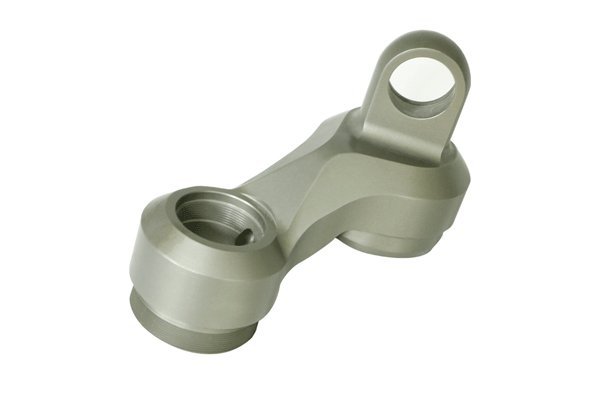Did you know that the Swiss machining process can hold tolerances as tight as ±0.001 inches? This astonishing level of precision is one of the many reasons why Swiss machining services have gained immense popularity across various industries, especially when it comes to custom designs. If you’re in the engineering or manufacturing sector, you may find yourself asking: “Is Swiss machining the right choice for my custom parts?” In this comprehensive blog, we will answer that question and more, providing a deep dive into the benefits of Swiss machining services, how they can solve specific design challenges, and why you should consider them for your next project.
—
—
1.1 What is Swiss Machining?
Swiss machining, also known as Swiss-type machining, is a method of producing high-precision parts. This unique process involves rotating a workpiece and feeding it along a stationary tool, allowing for intricate shapes and features to be cut accurately. The main advantage of Swiss machining is its ability to produce small, complex components with high accuracy and minimal setup time.
1.2 Historical Overview of Swiss Machining
Originating in the late 19th century in Switzerland, this technique was initially developed to produce watches. Over time, it evolved to accommodate various industries and applications requiring precision engineering. Today, Swiss machining continues to be integral in manufacturing, especially for custom designs, resulting in efficient production cycles and unmatched quality.
—
2.1 Precision and Accuracy
One of the standout features of Swiss machining is its ability to deliver exceptional precision, essential for industries like aerospace and medical devices. With tolerances often reaching ±0.001 inches, designers can produce parts that fit perfectly within assembly specifications.
2.2 Efficiency and Speed
With nearly unparalleled speed, Swiss machining can significantly reduce time-to-production. The use of live tooling and automated systems enables quick setup and shorter cycle times, translating raw materials into finished products in record time.

2.3 Versatility in Materials
Swiss machining can accommodate a wide array of materials—stainless steel, aluminum, plastics, titanium, and even exotic alloys. This versatility means that engineers can choose the best material for their specific applications without compromising on the machining process.
2.4 Customization Options
In today’s fast-paced world, companies often need parts tailored to unique specifications. Swiss machining allows for high levels of customization, facilitating unique designs that can be adapted based on customer requirements, whereas other machining methods may limit creativity.
2.5 Reduced Waste
Utilizing advanced technology and precise techniques, Swiss machining minimizes material waste significantly compared to conventional methods. This not only helps reduce costs but also contributes to a more sustainable manufacturing process.
—
3.1 Medical Industry
Swiss machining is instrumental in producing components like surgical instruments and implants, where precision and biocompatibility are paramount. A small error can have severe consequences, making Swiss machining the ideal solution.
3.2 Aerospace Sector
The aerospace industry requires parts that can withstand extreme conditions. Swiss machining is essential for producing aircraft components that meet stringent regulations while maintaining weight efficiency.
3.3 Automotive Manufacturing
From custom brackets to fuel injectors, Swiss machining enables automotive manufacturers to produce intricate parts with superior accuracy and durability, ensuring performance on the road.
3.4 Electronics Sector
In electronics, precision is crucial. Swiss machining is widely used to create connectors, housings, and casing for devices, contributing to the overall functionality and reliability of the electronic products.
—
4.1 CNC Machining
While both Swiss and CNC machining offer precision, CNC is more suited for larger parts and batch productions, whereas Swiss is ideal for small, intricate designs.
4.2 Conventional Turning and Milling
Conventional machining methods involve a more general approach and may struggle with complex geometries. Swiss machining’s specialized equipment allows for detailed cuts and tighter tolerances.
—
5.1 Assessing Your Project Requirements
Understanding your component specifications, tolerances, and material requirements is crucial. Grasp how these factors intertwine with your overall project goals.
5.2 Evaluating the Service Provider
Not all machining services are created equal. Look for providers with proven expertise, certifications, and a quality assurance strategy to ensure they can meet your demands.
5.3 Understanding Cost Structures
Evaluate the cost implications of various services. While Swiss machining may come with a higher upfront price, its efficiency and reduced waste can lead to overall savings.
—
Despite its numerous advantages, Swiss machining is not without its limitations. The initial setup costs can be high, and the complexity of the equipment requires skilled operators. Moreover, it is most effective for smaller parts, making it less suitable for larger components.
—
The future of Swiss machining looks promising with advancements in automation, AI, and IoT integration. These technological improvements aim to optimize production efficiency, reduce waste, and maintain high precision, further solidifying the importance of Swiss machining in modern manufacturing.
—
In conclusion, Swiss machining has transformed the landscape of custom designs, delivering high precision, efficiency, versatility in material usage, and outstanding customization options. As we’ve explored, its applications span several critical industries, proving its essential role in the modern manufacturing arena.
Understanding and considering Swiss machining services can be vital for businesses focused on quality and efficiency in their operations. As you plan your next project, take the time to weigh the benefits of this unique machining service. Aligning your production methods with industry-leading practices can significantly improve your competitive edge while fostering innovation in your custom design projects.
This blog sheds light on the profound impact Swiss machining has on the industry and underscores why it warrants serious consideration for future manufacturing challenges. Let this knowledge guide you in making informed decisions as you navigate the complexities of custom part production.



